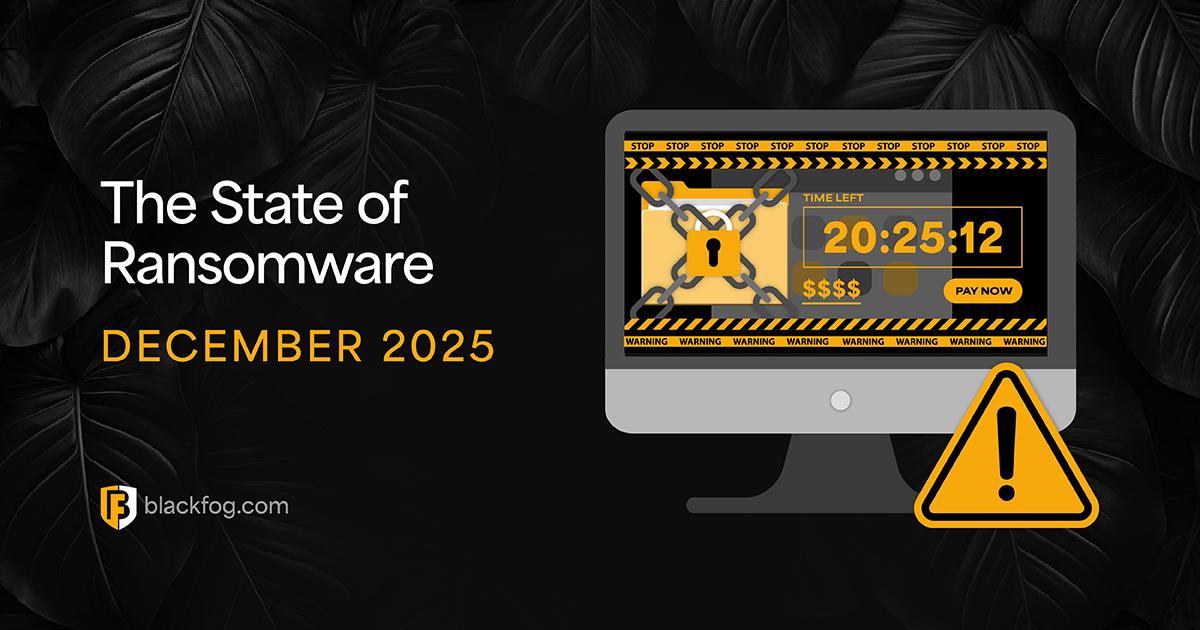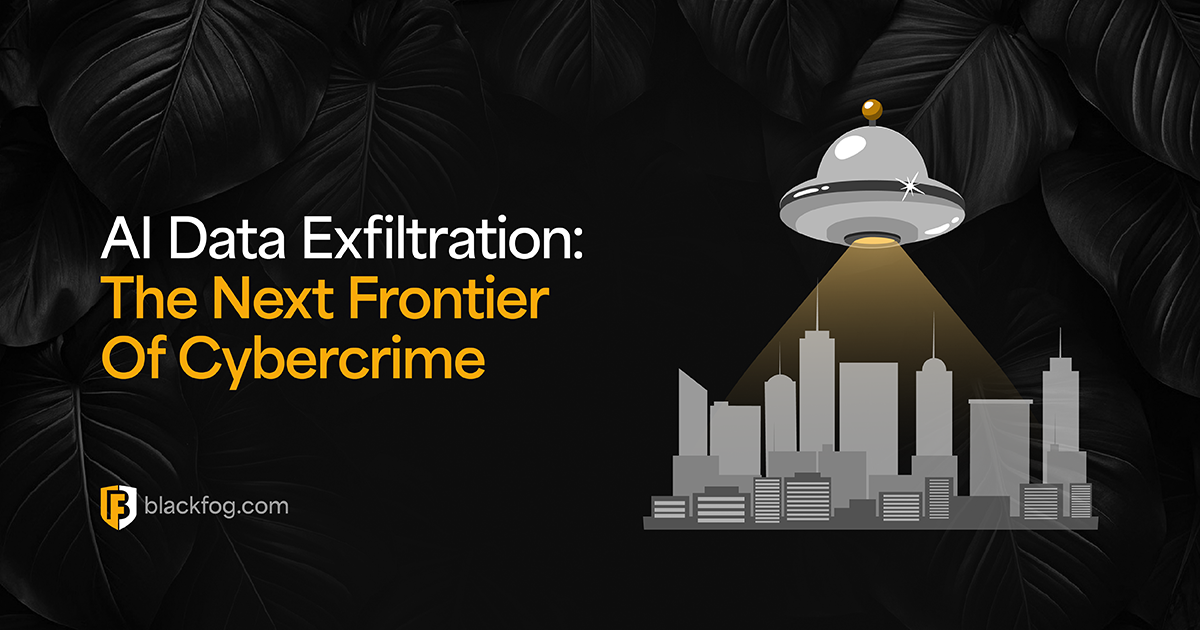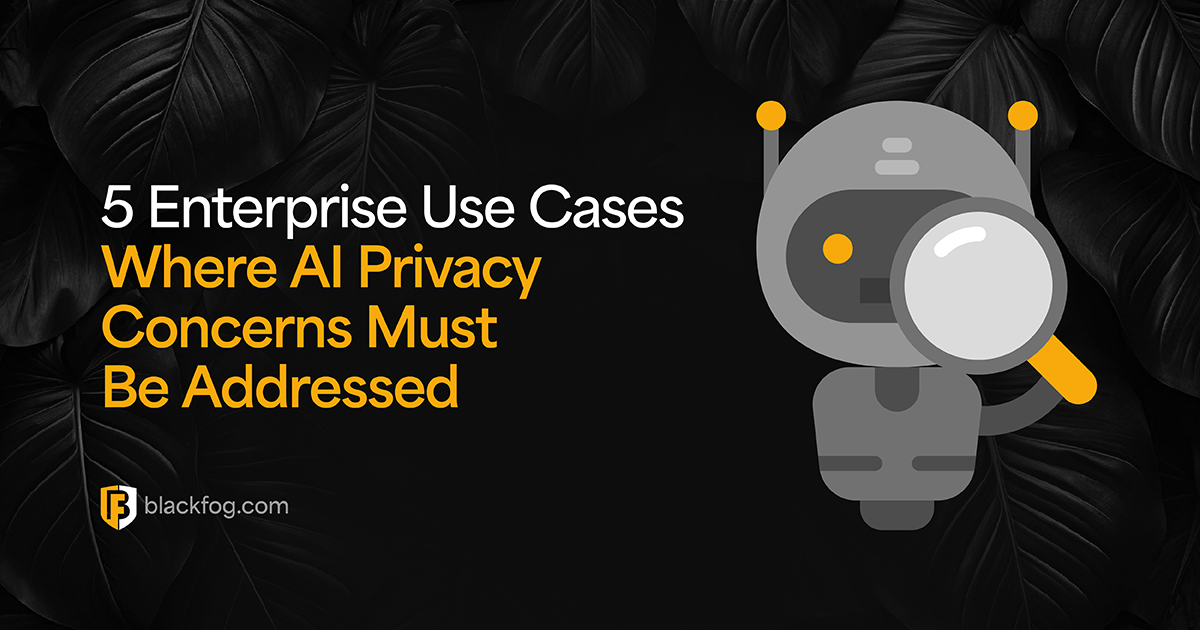
Data Risk Management: A Smarter, Deeper Approach
Data is the most valuable asset a business owns, but it also comes with more risk than ever. Sophisticated threats like double extortion ransomware, AI-driven cyberattacks and the rise of shadow data make protecting information a complex challenge.
Despite these growing dangers, many firms focus only on surface-level defenses. This can leave critical blind spots attackers can exploit, as well as making enterprises more vulnerable to other data leakage risks.
To address this, firms must take a deeper approach to data risk management. This gives organizations the visibility and control needed to safeguard sensitive information, adapt to emerging threats and secure data wherever it resides.
Why Data Risk Frameworks Fail
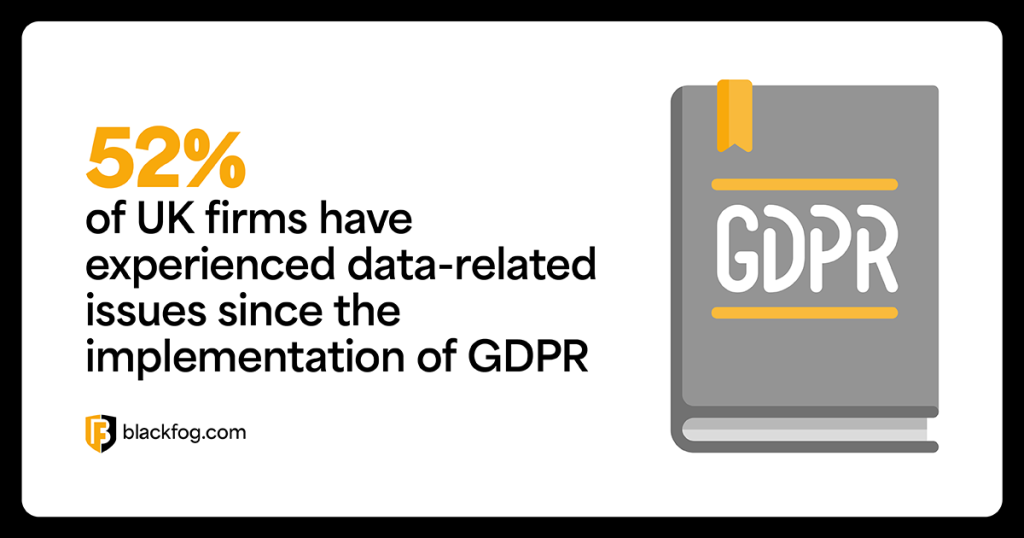
Many businesses believe they have strong data protection measures in place, especially when it comes to maintaining compliance. Indeed, one study by SurveyMonkey found 95 percent of UK firms are satisfied they meet all their GDPR requirements. However, despite this, more than half (52 percent) admit to experiencing data-related issues since the regulation was introduced.
Indeed, gaps between policy and practice often leave sensitive information exposed. Too often, firms rely on outdated tools that are not equipped to deal with the newest generation of cyberthreats. What’s more, a checkbox approach to compliance can create a false sense of security. This overconfidence can be costly.
Without a clear view of how data is stored, accessed and shared day-to-day, even the best frameworks fail to deliver real protection. Closing the gap between written policy and practical security is vital to reducing risk and avoiding costly breaches.
The Real Costs of Data Risk: More Than Just Fines
While regulatory penalties for data breaches can be substantial – such as Meta’s €1.2 billion fine in 2023 for GDPR violations – the financial repercussions extend far beyond these immediate costs. There are a wide range of direct and indirect impacts that can significantly affect businesses’ operations and reputation.
- Erosion of brand trust: Data breaches can severely undermine customer confidence. One study by Vercara, for instance, found that two-thirds of US consumers (66 percent) would not trust a company that falls victim to a data breach with their personal information. Such reputational damage can take years to restore.
- Operational downtime: Breaches frequently lead to system outages as organizations work to contain and remediate the incident, leading to significant productivity losses. For instance, Gartner has calculated that the average real-world cost of downtime is $5,600 per minute – or over $330,000 per hour.
- Customer churn: The loss of customer trust often leads directly to lost business for both B2C and B2B firms. Indeed, one study of security leaders by Cisco found that 95 percent of businesses say their customers will not work with them unless they can be sure their data is properly protected.
Don’t Confuse Data Risk With Cyber Risk: Understanding the Broader Picture
Many organizations focus their efforts on blocking hackers and preventing breaches, but data risk reaches much further than just cybersecurity. True data risk management looks at how information is collected, stored, used and governed across the entire business.
Without a clear strategy, firms open themselves up to a range of data security threats beyond cyberattacks, with key risks including:
- Legal: Compliance failures can lead to fines, lawsuits and costly regulatory action.
- Operational: Poor data processes and errors can disrupt workflows and hurt productivity.
- Ethical: Data misuse or bias in AI systems can damage public trust and attract negative media coverage.
A robust data risk strategy must therefore consider all these areas to keep the business protected on every front.
5 Overlooked Data Risks Lurking in Plain Sight
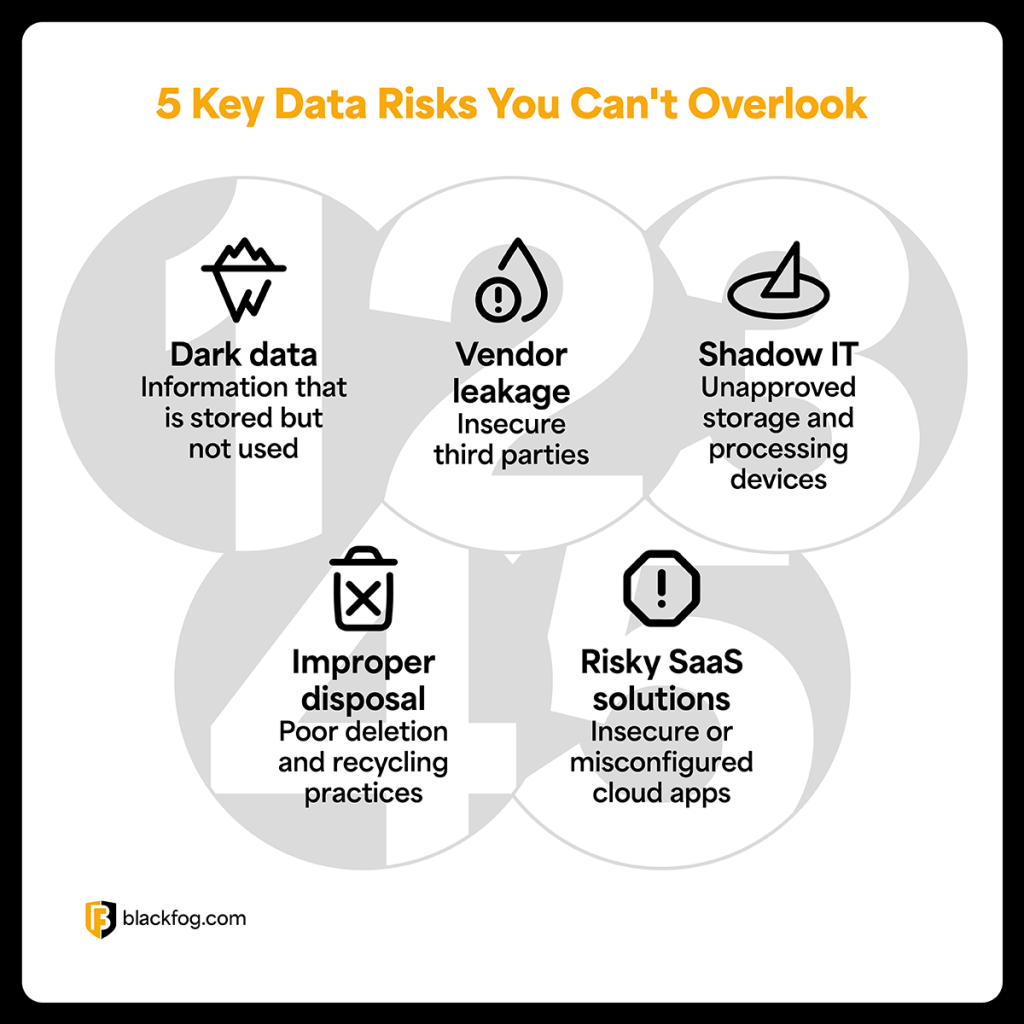
Many businesses focus on well-known threats such as ransomware attacks. However, they can often overlook other risks that can quietly expose valuable information without their knowledge. These hidden dangers can create compliance headaches, raise costs and increase the chance of a breach if not addressed properly. Here are five to be aware of.
- Dark data: This refers to information that has been collected, processed and stored, but is not used. According to Splunk, 60 percent of firms say half or more of their organization’s data is considered dark. Though inactive, it still needs protection and can be targeted by attackers, who can take advantage of the fact this data is overlooked or forgotten.
- Vendor data leakage: Third-party suppliers are often able to access sensitive information, but may not have the same security standards as the data owner. A poorly secured partner can therefore become an open door for data theft.
- Shadow IT and data duplication: Many employees use unauthorized apps to store or process data outside the firm’s network, which creates duplicate files outside approved systems. This makes tracking and securing information harder.
- Improper disposal of old datasets: Poor file deletion practices or even physically throwing away hardware that has not been wiped properly can leave recoverable data exposed. Discarded laptops or old backup drives are common weak points.
- Risky SaaS integrations: Connecting cloud tools without proper vetting can expose systems to vulnerabilities. Misconfigured APIs or over-permissioned apps may leak confidential data to unintended parties.
How to Run a Comprehensive Data Risk Audit
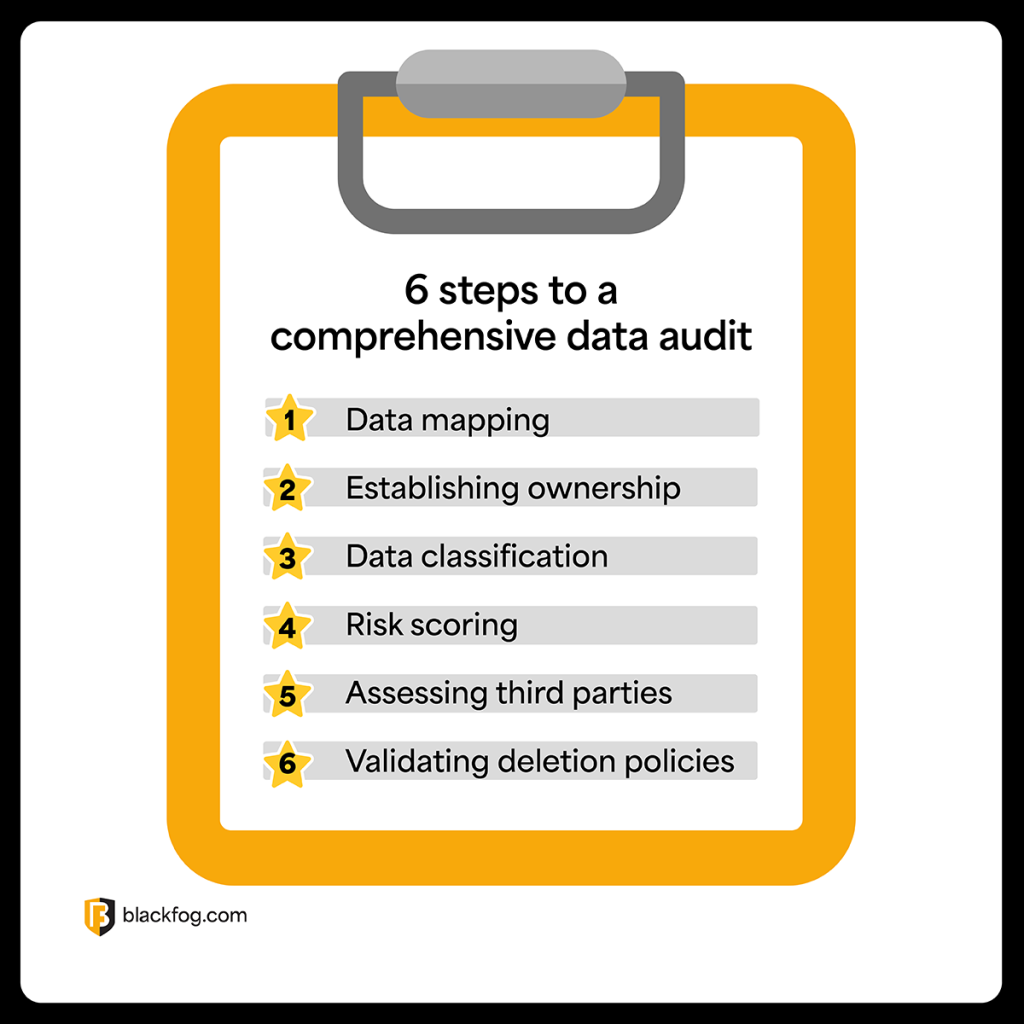
A good data risk assessment must include a comprehensive audit to identify what data a firm holds, where it is stored and who may have access to it. Use these steps to gain a clear picture of where your risks lie:
- Map your data: Catalog all the data you collect, store and share. Make sure not to overlook files in cloud apps, employee devices and old backups.
- Identify ownership: Assign responsibility for each dataset to a specific person or team. This makes accountability clear and speeds up response times if issues appear.
- Classify by sensitivity: Label data based on how sensitive or regulated it is and what the impact of exposure would be. For example, personal customer information should rank higher than internal memos.
- Score the risks: Assess how exposed each dataset is. Consider who can access it, how it’s protected and what would happen if it leaked.
- Check third parties: Review what data you share with vendors and partners. Verify that they follow security standards at least as strong as your own.
- Validate disposal processes: Make sure old files and devices are wiped or destroyed properly so no information can be recovered.
These steps should be repeated regularly to keep pace with new threats and changes in how your business uses data.
Smart Data Risk Mitigation Strategies Used by Agile Companies
Forward-thinking companies know data risk management must be dynamic to keep pace with changing threats and new technology. These firms adopt flexible, proactive measures that go beyond old compliance checklists and static controls. The following principles and practices must have a role to play in a modern strategy.
- Risk-based access control: Limit who can view or edit data based on their role and the sensitivity of the information. Regularly review permissions to prevent privilege creep.
- Rolling audits: Instead of waiting for annual checks, conduct smaller, continuous audits to catch issues early and adjust processes quickly.
- Privacy by design: Bake data protection into every project from the start. This means considering the potential privacy and security impact during planning, not as an afterthought.
- Controlled AI rollouts: AI tools are among the biggest users of data today. To stay secure, be sure to test new solutions in secure, sandboxed environments before deploying them widely. This reduces the risk of unexpected data leaks or misuse.
- Anti data exfiltration (ADX): Use advanced tools that monitor for suspicious data transfers and block unauthorized exfiltration in real-time. ADX adds an extra layer of defense against modern ransomware and insider threats by ensuring that even if a perimeter has been breached, information cannot be removed from the business.
Data Risk Metrics That Actually Matter (And Which Don’t)
Tracking the right data risk metrics helps leaders see real progress and fix weak spots fast. Focus on indicators that reveal true exposure, not just numbers.
Key metrics to track include:
- Time to detect and respond: How quickly are threats found and contained?
- Percentage of sensitive data encrypted: Measures how much critical information is protected.
- Number of active shadow IT apps: Shows how much data lives outside approved tools.
- Audit completion rate: Tracks how often full data checks are carried out.
By contrast, there are a few metrics that will prove less useful in actually giving a complete picture of how data is being protected. Details you can usually ignore include:
- Total firewall alerts: High counts mean little without context.
- Number of blocked spam emails: Basic hygiene, not a measure of data risk.
- Number of policies: Simply having data protection policies doesn’t tell you how they’re being applied or if there are contradictions between them.
The AI Factor: New Threats and Opportunities in 2025
Another major factor reshaping the data risk landscape in 2025 is artificial intelligence. This is not only a tool for innovation but also a weapon for cybercriminals. As a result, three in four security professionals (75 percent) reported they had to change their cybersecurity strategy in the last year, according to research by Deep Instinct.
However, it is not just AI-powered ransomware and phishing attacks that cause challenges. Internally, the rapid adoption of generative AI tools also introduces new vulnerabilities. A significant concern is the rise of ‘shadow AI’, where employees use unauthorized AI applications without oversight. One recent report by HiddenLayer found that 72 percent of IT leaders rate this as a major data risk.
AI systems themselves can also be targets. For instance, prompt injection attacks, where adversaries manipulate AI inputs to produce unintended outputs, have emerged as a critical threat.
To navigate this evolving threat landscape, organizations must implement robust AI governance frameworks, ensure comprehensive oversight of AI tool usage and continuously monitor for emerging AI-driven threats.
Futureproofing: Building a Culture of Data Resilience
Technology alone cannot secure data. A resilient organization builds a culture where every employee understands their role in protecting information. Data literacy must become part of everyday work, so teams know how to handle, share and store data responsibly.
Championing data minimalism also helps. This means collecting only what is truly needed, limiting where it’s kept and removing what’s no longer useful. Combine this mindset with strong access controls to ensure only the right people see sensitive details and ADX solutions to stop unauthorized transfers in real-time. Together, these steps help businesses stay agile, limit risk and maintain trust, no matter how threats evolve.
Share This Story, Choose Your Platform!
Related Posts
The State of Ransomware 2025
BlackFog's state of ransomware 2025 report measures publicly disclosed and non-disclosed attacks globally.
The State of Ransomware: December 2025
BlackFog's state of ransomware December 2025 measures publicly disclosed and non-disclosed attacks globally.
AI Data Exfiltration: The Next Frontier Of Cybercrime
How are cybercriminals using AI data exfiltration to enhance their ransomware attacks and what must businesses do to counter these threats?
5 Enterprise Use Cases Where AI Privacy Concerns Must Be Addressed
AI privacy concerns are rising with AI adoption - five use cases highlight the key issues businesses must consider.
What AI Management Really Means For The Enterprise
Ongoing AI management is essential in maintaining compliance in a challenging environment. Here's what businesses need to consider.
AI Security Risks Every Business Must Know About
AI Security Risks are growing as AI embeds in business. What key threats must firms address to stay compliant with data regulations?


